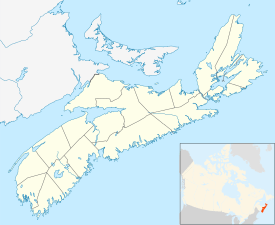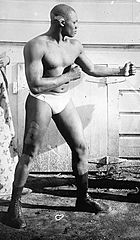Weymouth, Nova Scotia facts for kids
Quick facts for kids
Weymouth
|
|
|---|---|

Weymouth street scene
|
|
| Country | |
| Province | |
| County | Digby |
| Founded | 1783 |
| Electoral Districts Federal |
West Nova |
| Provincial | Clare-Digby |
| Time zone | ATS |
| Postal Code |
B0W
|
| Area code(s) | +1-902-837 |
| Website | The Village Of Weymouth |
Weymouth is a small village in Nova Scotia, Canada. It's located in Digby County. The village sits on the Sissiboo River, which flows into Baie Ste. Marie.
Contents
History of Weymouth
The area where Weymouth is now was first settled in the 1760s. These early settlers were called New England Planters. The village of Weymouth was officially started in 1783. This was the same year the Treaty of Paris was signed. This treaty ended the American Revolution.
A man named James Moody founded Weymouth. He was a Loyalist, meaning he supported the British during the American Revolution. The village was likely named after Weymouth, Massachusetts. This is where the Strickland family, early settlers, came from.
Early Industries and Important Buildings
In the mid-1800s, shipping and shipbuilding were very important here. You can still see parts of old docks on the Sissiboo River. Ships loaded with lumber sailed from Weymouth to places all over the world.
For a long time, Weymouth had the oldest general store in Eastern Canada. It was called The Trading Post and opened in 1837. Sadly, it closed in 2009. The village also had one of the first offices of the Merchants Bank of Halifax. This bank later became the Royal Bank of Canada. The building is now part of the old Trading Post. The Dominion Atlantic Railway used to run through Weymouth. But trains stopped using this line in March 1990.
The nearby community of Weymouth Falls was home to a famous boxer. His name was Sam Langford (1886–1956). Many people think he was one of the greatest boxers ever. He won titles in England, Spain, and Mexico.
Major Fires and Floods
Weymouth has faced several big disasters over the years.
- On August 4, 1909, a fire destroyed two churches, a hotel, and other buildings.
- On October 2, 1929, another fire started in a general store. It quickly spread through the downtown area. This fire destroyed 25 buildings, including shops, factories, and homes. The damage was estimated to be about $250,000. Luckily, no one was seriously hurt or died.
- In 1958 and 1959, more fires caused damage to businesses.
- In March 2003, the Sissiboo River flooded. The town was covered in almost two feet of water.
- In 2017, one of Canada's oldest buildings in Weymouth was destroyed by fire. This fire also damaged other buildings. Over 130 firefighters from nine different departments helped put out the blaze.
New France: The "Electric City"
About 12 miles (19 km) inland from Weymouth was a lumber community called New France. The Stehelin family from France started it in 1892. This community was special because it used hydroelectric power very early on. This earned it the nickname "The Electric City."
The Stehelin family also built their own railroad. It was called the Weymouth and New France Railway. They used logs for tracks! This railway helped them bring lumber to the company's dock in Weymouth. They shipped a lot of timber, sometimes 1.5 million board feet each year. This lumber went to South America and England. The railway was destroyed by fire in 1907. The lumber business stopped soon after.
Today, not much is left of New France, just the foundations of the old buildings. The land was bought by the Province of Nova Scotia in 2010. This helps protect this unique part of the province's history.
Geography and Location
Weymouth is located on the Sissiboo River. This river is special because it swells with salt water every six hours. This happens because of the high tides from the Bay of Fundy flowing into St. Mary's Bay.
Weymouth is on the border between two provincial voting areas: Clare and Digby-Annapolis. It is about 33 kilometers from Digby. It's also 72 kilometers from Yarmouth. The capital of Nova Scotia, Halifax, is about 250 kilometers away.
Several smaller villages surround Weymouth. These include Weymouth Falls, Weaver Settlement, Ohio, Southville, Riverdale, Danvers, Hassett, Saint Bernard, and New Edinburgh.
You can get to Weymouth from Highway 101 using exits 27 and 28. Trunk 1 also runs through the village. This road was the main route from the Annapolis Valley to Yarmouth before Highway 101 was built.
Climate in Weymouth
Weymouth has a humid continental climate. This means it has warm summers and cold winters. Its location near the ocean affects its weather. The land between Weymouth and the main ocean helps protect it a bit. But the climate is still milder than places far from the coast.
| Climate data for Weymouth | |||||||||||||
|---|---|---|---|---|---|---|---|---|---|---|---|---|---|
| Month | Jan | Feb | Mar | Apr | May | Jun | Jul | Aug | Sep | Oct | Nov | Dec | Year |
| Record high °C (°F) | 19 (66) |
17.5 (63.5) |
22 (72) |
24 (75) |
30.6 (87.1) |
33 (91) |
32.5 (90.5) |
33 (91) |
29.4 (84.9) |
25.5 (77.9) |
23 (73) |
18.3 (64.9) |
33 (91) |
| Mean daily maximum °C (°F) | 0.3 (32.5) |
0.6 (33.1) |
4.6 (40.3) |
10 (50) |
16.1 (61.0) |
20.8 (69.4) |
23.7 (74.7) |
23.4 (74.1) |
19.1 (66.4) |
13.7 (56.7) |
8.2 (46.8) |
3.2 (37.8) |
12 (54) |
| Mean daily minimum °C (°F) | −7.8 (18.0) |
−7.8 (18.0) |
−4.1 (24.6) |
0.7 (33.3) |
5.3 (41.5) |
9.9 (49.8) |
13.1 (55.6) |
12.7 (54.9) |
8.8 (47.8) |
4.5 (40.1) |
0.8 (33.4) |
−4.5 (23.9) |
2.6 (36.7) |
| Record low °C (°F) | −24.4 (−11.9) |
−28.3 (−18.9) |
−23.5 (−10.3) |
−11.7 (10.9) |
−5.6 (21.9) |
−1.1 (30.0) |
2.8 (37.0) |
2.5 (36.5) |
−3 (27) |
−6.7 (19.9) |
−13 (9) |
−25 (−13) |
−28.3 (−18.9) |
| Average precipitation mm (inches) | 131.9 (5.19) |
97.7 (3.85) |
109.5 (4.31) |
97 (3.8) |
107.5 (4.23) |
91.9 (3.62) |
97.4 (3.83) |
79.4 (3.13) |
111.9 (4.41) |
104.8 (4.13) |
125.2 (4.93) |
141 (5.6) |
1,295.2 (50.99) |
| Source: Environment Canada | |||||||||||||
Economy and People
The main industries in Weymouth are fur farming, especially raising mink. Fishing and logging are also very important jobs in the area.
Weymouth is home to people from many different backgrounds. Most residents are descendants of the Loyalists. There are also African-Canadian and White communities. A few Acadians, Mi'kmaq, and people of German ancestry live here too.
Weymouth in Stories
The author Josephine Leslie, who wrote as R. A. Dick, often spent her summer vacations in Weymouth North. She imagined what life was like in Weymouth during its busy sailing days. This inspired her to write the book "The Ghost and Mrs. Muir."
Weymouth and Weymouth Falls are also mentioned in the poetry book Whylah Falls (1990) by George Elliott Clarke.
See also
 In Spanish: Weymouth (Nueva Escocia) para niños
In Spanish: Weymouth (Nueva Escocia) para niños



